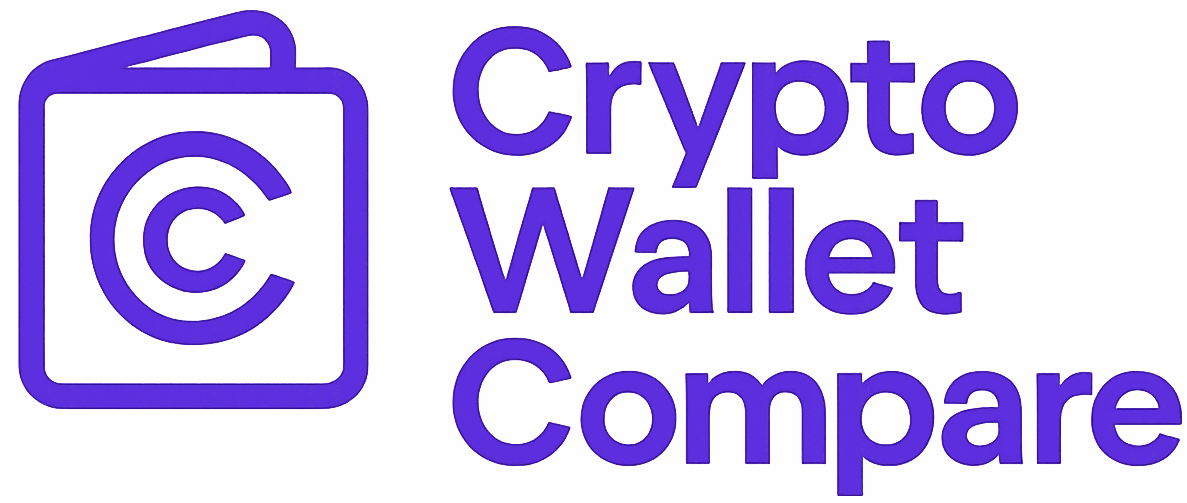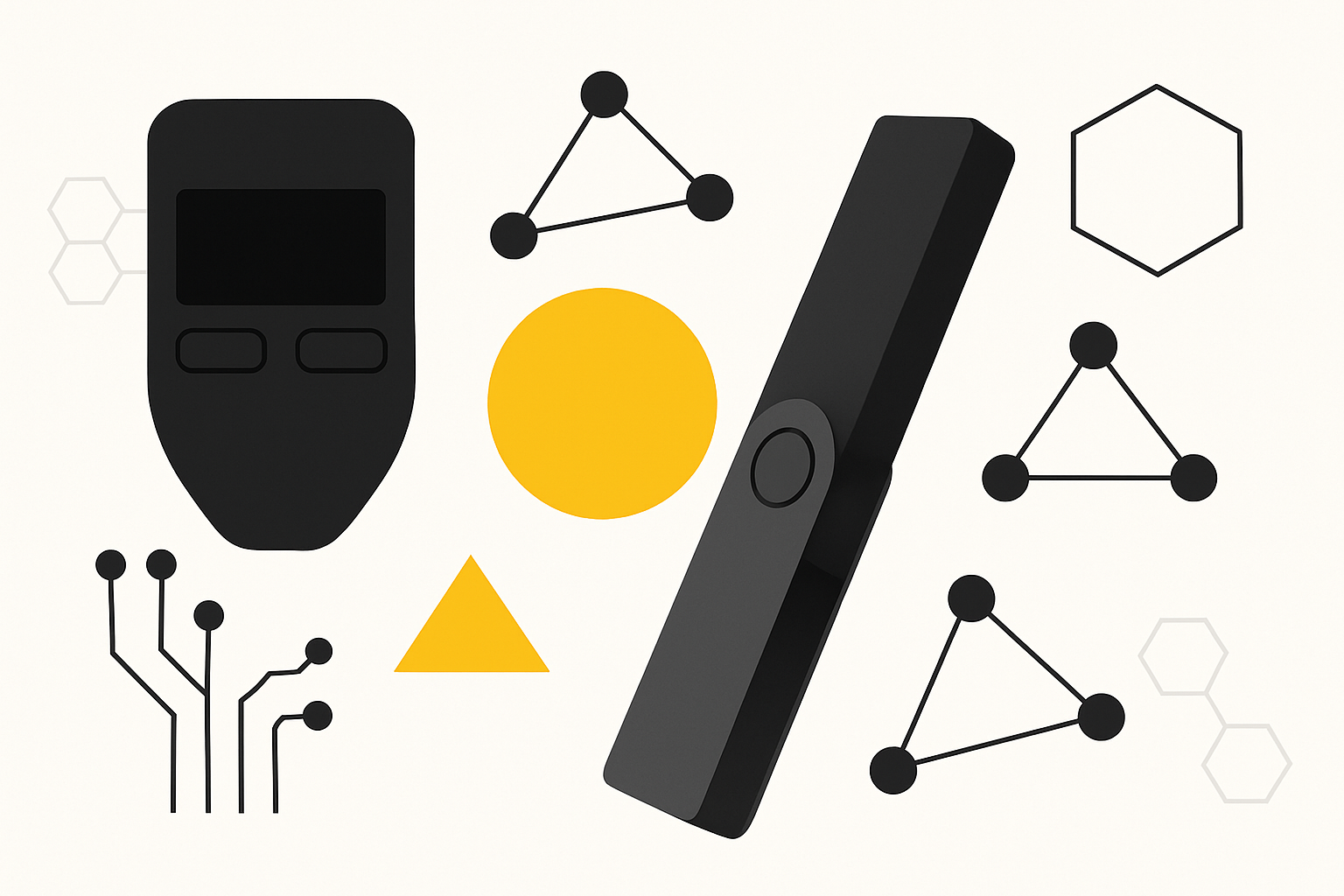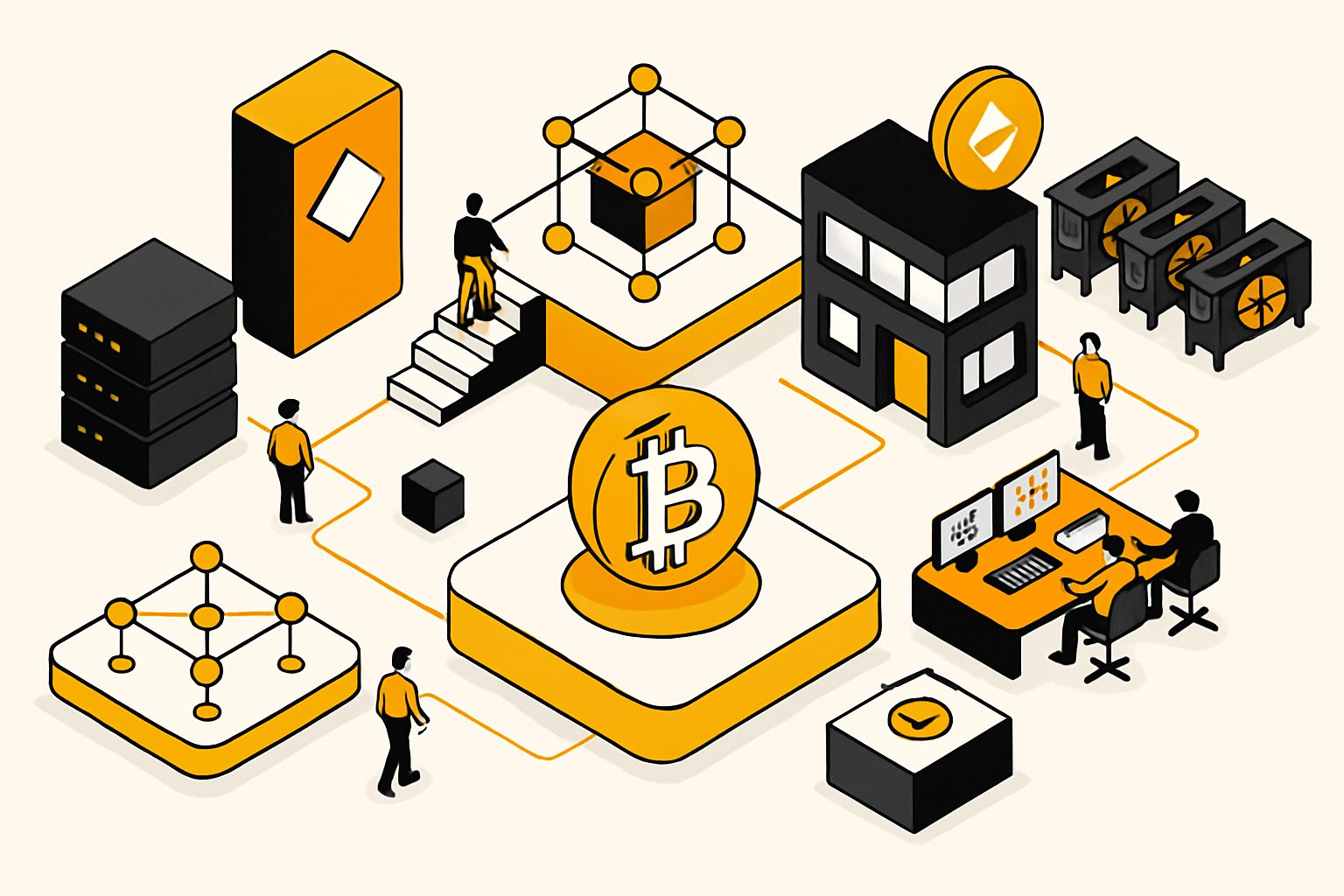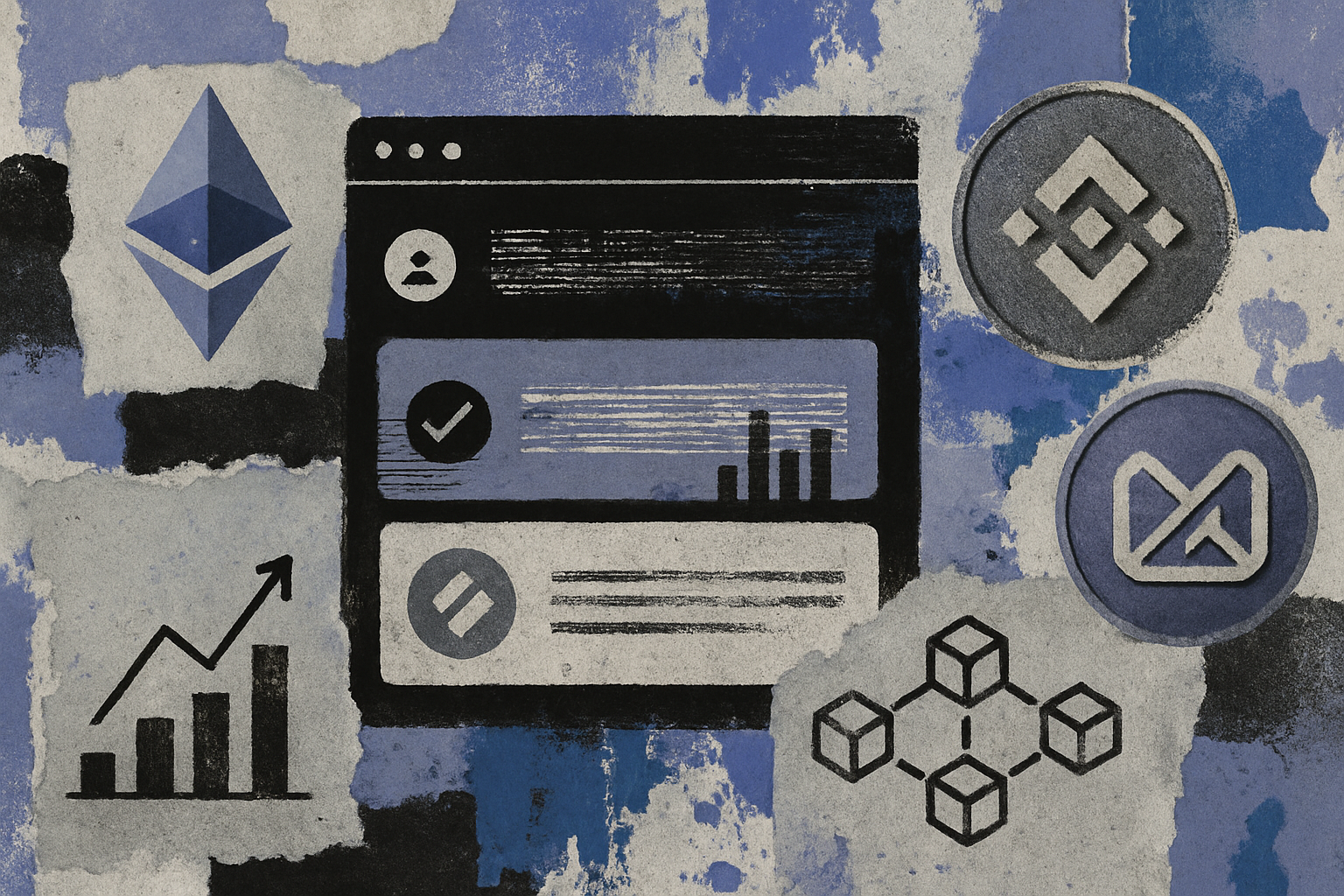Choosing the right crypto wallet in 2025 is more dynamic than ever. With Binance Wallet and Trust Wallet both leveling up their feature sets, the decision now comes down to your priorities: seamless DeFi integration, ultimate asset diversity, or the purest form of self-custody? Let’s break down how these two giants stack up in real-world use, security, rewards, and overall user experience.

Feature Face-Off: Supported Blockchains and Asset Diversity
Trust Wallet takes the lead for sheer breadth. Supporting 100 and blockchains and over 10 million tokens, it’s a non-custodial powerhouse for users who want maximum flexibility. Whether you’re holding Ethereum NFTs, Solana SPL tokens, or obscure altcoins from emerging networks, Trust Wallet has you covered. Its built-in Web3 browser lets you dive straight into DeFi platforms and NFT marketplaces without leaving the app.
Binance Wallet isn’t far behind. Integrated directly into the Binance ecosystem, it supports 60 and blockchains, including heavy hitters like Ethereum, BNB Smart Chain, Solana, and Bitcoin. The real kicker is its seamless access to Binance’s trading tools and DeFi services, think instant swaps, lending/borrowing protocols, and direct dApp connectivity all from one dashboard. If you’re already trading on Binance or leveraging its Earn features, this tight integration is a major advantage.
Binance Wallet vs Trust Wallet: Blockchain & Token Support
-

Supported Blockchains: Trust Wallet leads with support for 100+ blockchains, including Ethereum, BNB Smart Chain, Solana, Polygon, and more. Binance Wallet supports 60+ blockchains, focusing on major networks like Ethereum, BNB Smart Chain, Solana, and Bitcoin.
-

Token Management: Trust Wallet enables users to manage 10 million+ tokens across supported chains, making it one of the most versatile wallets available. Binance Wallet offers robust token management but with a primary focus on tokens integrated within the Binance ecosystem.
-

In-App Staking & Rewards: Trust Wallet provides in-app staking for 25+ cryptocurrencies, allowing users to earn rewards directly. Binance Wallet integrates Binance Earn features, including staking, liquidity farming, and Launchpool rewards, all accessible within the wallet.
-

dApp & NFT Integration: Trust Wallet features a built-in Web3 browser for direct access to dApps and NFT marketplaces across multiple chains. Binance Wallet offers seamless dApp connectivity, especially for DeFi and trading within the Binance ecosystem.
-

Custody & Recovery: Trust Wallet is non-custodial, giving users full control via a 12-word recovery phrase. Binance Wallet employs multi-party computation (MPC) for enhanced security and offers access recovery features for added protection.
User Experience: Streamlined Power vs Mobile Simplicity
If you thrive on advanced tools and crave a centralized hub for all things crypto trading and DeFi, Binance Wallet delivers with its comprehensive interface. Everything from spot trading to staking is just a click away, no need to juggle multiple apps or browser tabs. But this depth comes with a learning curve; new users may find themselves overwhelmed by options.
Trust Wallet flips the script, focusing on accessibility with a clean mobile-first design that’s ideal for beginners but powerful enough for seasoned holders. The onboarding process is fast, download, create your 12-word recovery phrase (don’t lose it!), then start exploring dApps or staking assets in minutes. The emphasis is on user autonomy; you control your keys at all times.
Rewards and Staking: Earning Opportunities Compared
Both wallets are serious about helping users grow their portfolios through passive income streams, but their approaches differ:
- Binance Wallet: Direct access to Binance Earn features, including staking pools across multiple chains, liquidity farming options with competitive APYs, Launchpool rewards for early adopters of new tokens (sometimes tied to exclusive events like Token2049), plus regular airdrop campaigns.
- Trust Wallet: In-app staking for over 25 cryptocurrencies, think ETH2.0 staking, BNB Smart Chain validators, Tezos baking, all without leaving the app or relying on third-party services. Rewards are paid directly into your wallet; no centralized custody required.
This means if maximizing yield within an established ecosystem is your goal, and you don’t mind some custodial elements, Binance might edge ahead. But if self-custody plus broad staking support matters most? Trust remains king.
Security Showdown: MPC vs Biometric Control
Your assets need protection, and both wallets have doubled down here in 2025:
- Binance Wallet: Employs cutting-edge Multi-Party Computation (MPC) tech to safeguard private keys while offering backup/recovery features if you lose access, a safety net that appeals to less technical users.
- Trust Wallet: Pure non-custodial security with biometric authentication (face/fingerprint unlock) plus a classic 12-word seed phrase, your keys never leave your device or touch centralized servers.
The choice boils down to comfort level: prefer extra recovery options or absolute self-sovereignty?
Security isn’t just about tech – it’s also about trust and user habits. If you’re the type who prefers a backup plan and values Binance’s recovery mechanisms, their wallet offers peace of mind with robust, centralized fallback options. If you’re a crypto purist who believes in “not your keys, not your coins, ” Trust Wallet’s self-custody model stays true to decentralization’s roots. But remember: with great power comes great responsibility. Lose your seed phrase in Trust Wallet, and there’s no lifeline.
Community and Onboarding: Which Wallet Wins for Newcomers?
Onboarding is where these two wallets split paths dramatically. Trust Wallet is laser-focused on reducing friction for new users. The app guides you through setup step-by-step, highlights best security practices, and even includes educational resources for navigating DeFi and NFTs safely. Its mobile-first ethos means you can go from zero to crypto holder in under five minutes – perfect for onboarding at events like Token2049 or introducing friends to Web3.
Binance Wallet, meanwhile, leans into its ecosystem strengths. If you already have a Binance account, adding the wallet is nearly seamless – one login unlocks advanced trading tools, dApps, and DeFi products without extra KYC hoops. However, total newcomers might find the interface intimidating compared to Trust’s minimalist approach.
Top Onboarding Tips for Binance & Trust Wallet
-

Secure Your Recovery Phrase Immediately – For Trust Wallet, write down your 12-word recovery phrase and store it offline. For Binance Wallet, set up access recovery options and enable all recommended security features.
-

Enable Biometric Authentication – Activate fingerprint or facial recognition in Trust Wallet for quick, secure access. In Binance Wallet, enable two-factor authentication (2FA) for enhanced protection.
-

Explore Supported Blockchains – Trust Wallet supports over 100 blockchains and 10 million+ tokens. Binance Wallet supports 60+ blockchains including Ethereum, BNB Smart Chain, Solana, and Bitcoin. Check compatibility before transferring assets.
-

Try In-App Staking & Rewards – Stake over 25 cryptocurrencies directly in Trust Wallet or access Binance Earn features like staking, liquidity farming, and Launchpool rewards in Binance Wallet.
-

Use Built-In Web3 Browser for dApps – Trust Wallet offers a mobile Web3 browser for direct interaction with dApps and NFT marketplaces. Binance Wallet integrates dApp access within the Binance platform for seamless DeFi experiences.
-

Start with Small Transactions – Test your first transfers with a small amount to ensure you understand wallet addresses, fees, and transaction times on both wallets.
-

Stay Updated with Official Resources – Follow the Trust Wallet Community and Binance Support for the latest guides, tips, and security alerts.
Feature Recap Table: Binance Wallet vs Trust Wallet (2025)
Binance Wallet vs Trust Wallet: Feature Comparison (2025 Edition)
| Feature | Binance Wallet | Trust Wallet |
|---|---|---|
| Supported Blockchains | 60+ (Ethereum, BNB Smart Chain, Solana, Bitcoin, etc.) | 100+ (Ethereum, BNB Smart Chain, Solana, Bitcoin, and more) |
| Supported Tokens | Millions (via supported blockchains) | 10+ million |
| Staking Options | Access to Binance Earn: staking, liquidity farming, Launchpool | In-app staking for 25+ cryptocurrencies |
| dApp & NFT Access | Direct dApp access within Binance ecosystem | Built-in Web3 browser for dApps & NFT marketplaces |
| Recovery Methods | Account recovery via Binance, enhanced by MPC technology | 12-word recovery phrase (user-controlled) |
| Security Features | Multi-party computation (MPC), Binance account security | Biometric authentication, 12-word recovery phrase |
| Custody Type | Custodial (with user controls) | Non-custodial (full user control) |
| User Experience | Integrated with Binance; advanced trading & DeFi tools; best for Binance users | Mobile-first, simple interface; easy for beginners & advanced users |
| Rewards | Binance Earn: staking, farming, Launchpool rewards | Staking rewards for supported coins, direct from app |
Final Thoughts: Which Crypto Wallet Fits Your 2025?
The Binance Wallet vs Trust Wallet debate isn’t about finding a universal winner – it’s about matching your priorities to the right tool. Need maximum asset support, pure self-custody, and rapid onboarding? Trust Wallet stands out. Want unified access to trading, DeFi rewards like Launchpool or Binance Earn, plus strong backup options? The Binance Web3 Wallet is tough to beat if you’re already part of their ecosystem.
Both wallets are at the cutting edge of crypto UX in 2025 – but they serve different tribes. Whether you’re stacking altcoins on your phone or yield farming across multiple protocols from one dashboard, there’s never been a better time to pick your side.
Which crypto wallet do you prefer for daily use in 2025?
Both Binance Wallet and Trust Wallet have evolved with unique features and security options. Binance Wallet offers seamless integration with the Binance ecosystem and advanced DeFi tools, while Trust Wallet provides a user-friendly, mobile-first experience with broad asset support. Which one fits your daily needs best?




